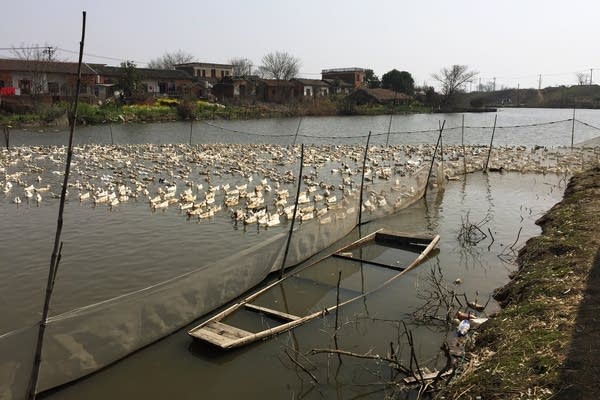Scientists worry massive Chinese lake a global bird flu cauldron

On the Min family farm on the banks of Poyang Lake, thousands of ducks wade in flooded rice paddies. The ducks mingle with thousands of flocks of migratory water fowl, creating ideal conditions for the spread of avian influenza.
Rob Schmitz | Marketplace
Go Deeper.
Create an account or log in to save stories.
Like this?
Thanks for liking this story! We have added it to a list of your favorite stories.


